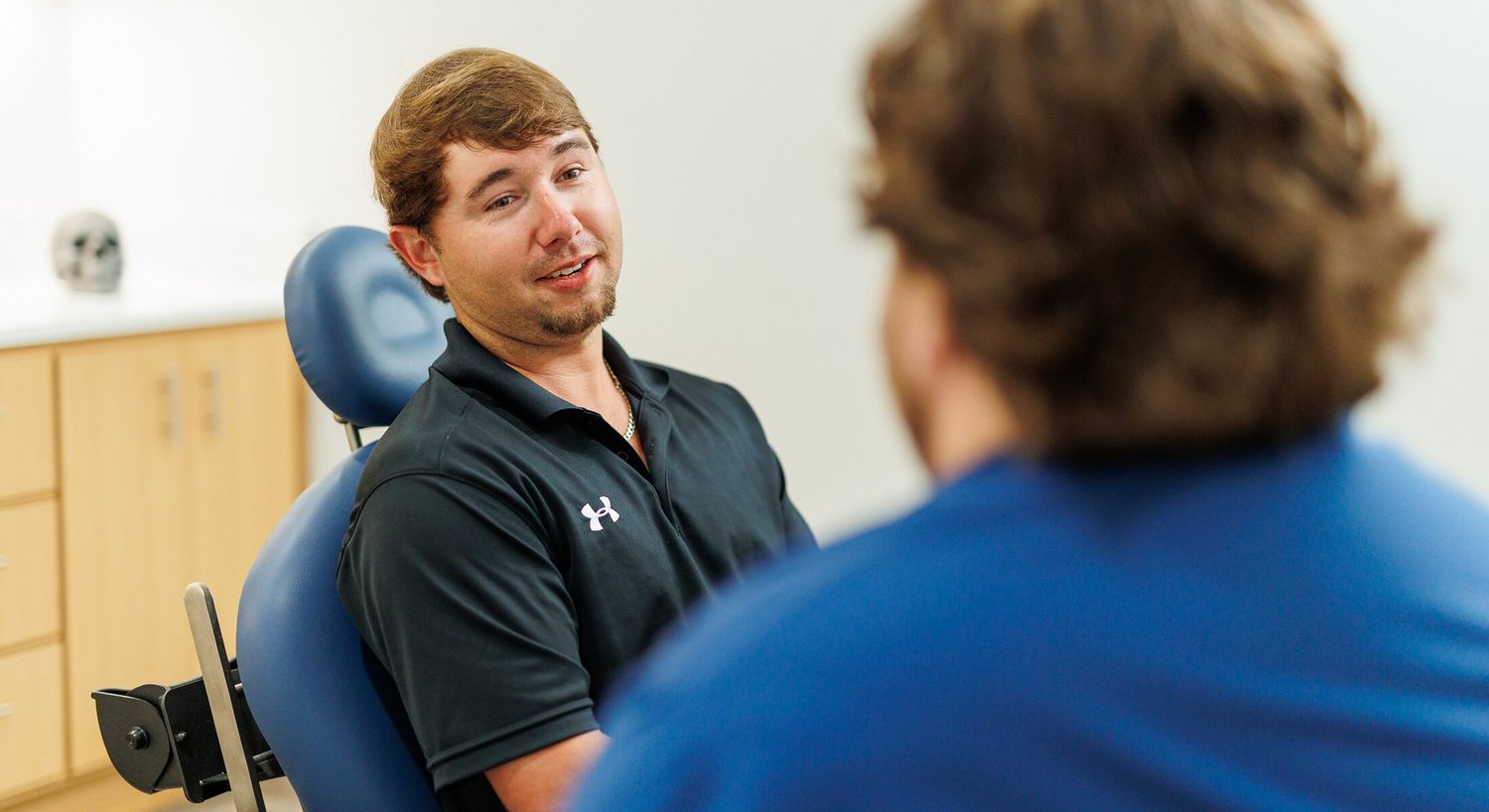
Dental Bone Grafting

Bone grafting plays a crucial role in restoring strength and structure to your jaw, ensuring a stable foundation for dental implants and improved oral health. Dr. Joshua S. Brandner, DDS, MD, and his team combine advanced techniques with compassionate care at The OMS Center of South Louisiana, delivering exceptional results. We prioritize your comfort and safety, using proven methods to help you achieve lasting oral health benefits. Our state-of-the-art facilities and personalized approach ensure you feel confident and cared for throughout your treatment.

At our practice in Hammond bone grafting is a specialized procedure that restores and reinforces the jawbone, providing a solid foundation for dental implants and other oral/maxillofacial treatments. During the process, Dr. Brandner may use a range of grafting materials—often a patient’s own bone, donor bone, or synthetic grafts—to rebuild areas weakened by tooth loss, periodontal disease, or trauma.
This step often precedes dental implant placement, ensuring enough stable bone to securely anchor the implant. Each treatment plan is fully customized, and Dr. Brandner considers factors like bone density, the patient’s overall health, and future treatment goals to choose the ideal grafting technique.

After tooth extraction, Dr. Brandner places grafting material directly into the empty socket. This helps maintain the bone’s shape and density, making future implant placement more predictable and successful.
If bone loss has already altered the jaw’s contours, ridge augmentation rebuilds the area to create a stronger, more uniform ridge. This helps improve both function and appearance, allowing for stable implant placement and a more natural facial profile.
Bone grafting may be ideal if you plan to receive dental implants, have experienced significant bone loss, or wish to improve oral function and aesthetics. Healthy individuals who maintain good oral hygiene and follow their oral surgeon’s instructions typically benefit most from this procedure. Those with uncontrolled medical conditions or who smoke heavily may need to address these factors before proceeding. Dr. Brandner conducts a thorough consultation to determine whether bone grafting aligns with your treatment goals and overall health.

With bone grafting Hammond patients will find that it supports the long-term success of dental implants, preserving jaw integrity and preventing further bone loss. It improves your bite function, helping you chew comfortably and speak clearly. By maintaining proper bone density, this procedure also protects your facial structure, preventing the sunken appearance that can occur after tooth loss.
Most patients find recovery from bone grafting straightforward. Some mild swelling or discomfort may occur but usually subsides within a few days. Following our aftercare plan—such as sticking to a soft diet, avoiding strenuous activity, and keeping the graft area clean—promotes proper healing. Dr. Brandner will schedule follow-up visits to ensure your bone graft integrates smoothly and that you’re ready for the next steps in your dental journey.
As the graft heals and fuses with your existing bone, you’ll gain a stronger, more stable jaw structure. This sets the stage for successful dental implant placement and long-term oral health improvements. Patients often enjoy better chewing ability, a more youthful facial appearance, and enhanced comfort. Proper maintenance, including regular dental check-ups and good oral hygiene, ensures your bone grafting results last many years.

Most patients experience significant healing within a few weeks, but complete integration may take several months. The timeframe varies based on your individual healing capacity and the extent of grafting required.
We prioritize your comfort. Dr. Brandner uses local anesthesia and can provide sedation options. You’ll stay relaxed and pain-free throughout the procedure.
You may need to stick to softer foods for a short period. As your graft heals, you’ll gradually return to your regular diet. Dr. Brandner will provide guidance tailored to your specific needs.
Yes. Bone grafting is a standard, well-established oral/maxillofacial procedure. Our team follows strict protocols, uses high-quality materials, and provides comprehensive aftercare instructions to ensure a safe experience.
If you lack sufficient bone density or volume, bone grafting often becomes critical to secure long-lasting implant success. Dr. Brandner will determine if this is necessary during your consultation.
Conditions like uncontrolled diabetes or heavy smoking habits may affect healing. Discuss any medical issues with Dr. Brandner, who may recommend addressing these factors before scheduling bone grafting.
Follow our aftercare instructions, attend follow-up appointments, and maintain excellent oral hygiene. Avoiding tobacco and embracing a balanced diet also improves healing and long-term success.